Cannabis flowering stage how-to guide
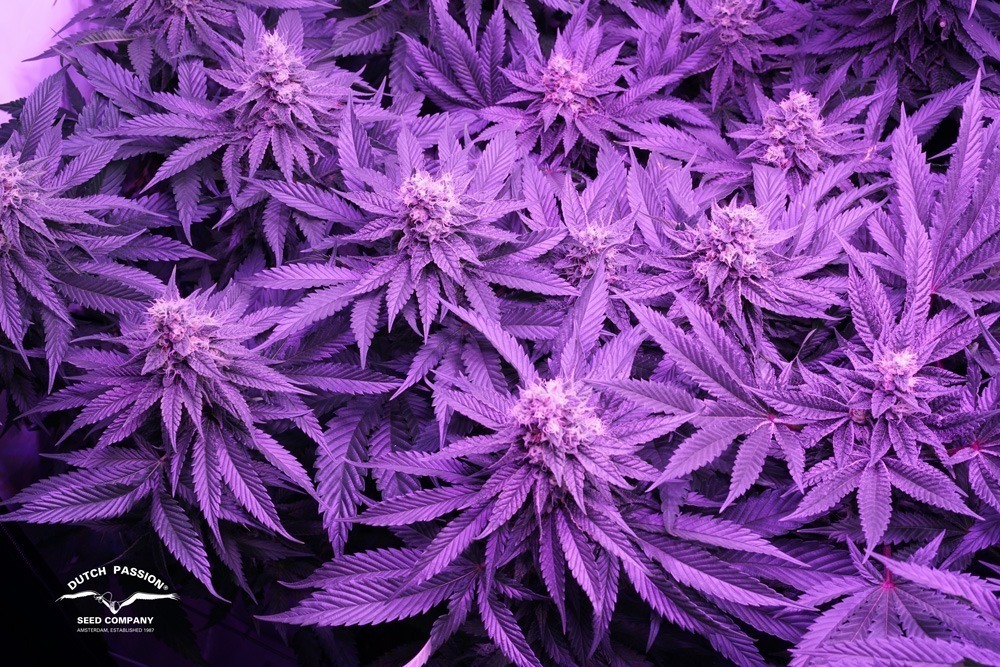
During the flowering stage, cannabis undergoes plant hormonal changes which allows the production of buds/flowers. For cannabis growers, seeing the blooms grow and the cannabis terpene aroma develop is one of the most satisfying parts of cultivation.
If growing photoperiod feminised cannabis seeds indoors, the cannabis flowering stage begins when the grower introduces bloom conditions (12 hours of daily light). Those growing autoflowering cannabis seeds won’t be able to dictate the start of bloom.
Instead, they must wait until the cannabis genetics are ready, usually around 4-6 weeks after germination. This cannabis flowering stage guide will explain the key stages and how you can optimise cannabis flowering.
What does the cannabis flowering stage refer to?
The cannabis flowering stage refers to the time when the cannabis plant produces the female flowers that will be eventually harvested. For photo dependent feminised seeds the flowering stage of cannabis lasts around 9 weeks.
As well as producing long blooms full of stacked buds, the cannabis flowering stage is also a time when the production of resinous trichome glands goes into full flow. This produces the familiar sticky, aromatic resin which coats the buds with a white sugar frosting.
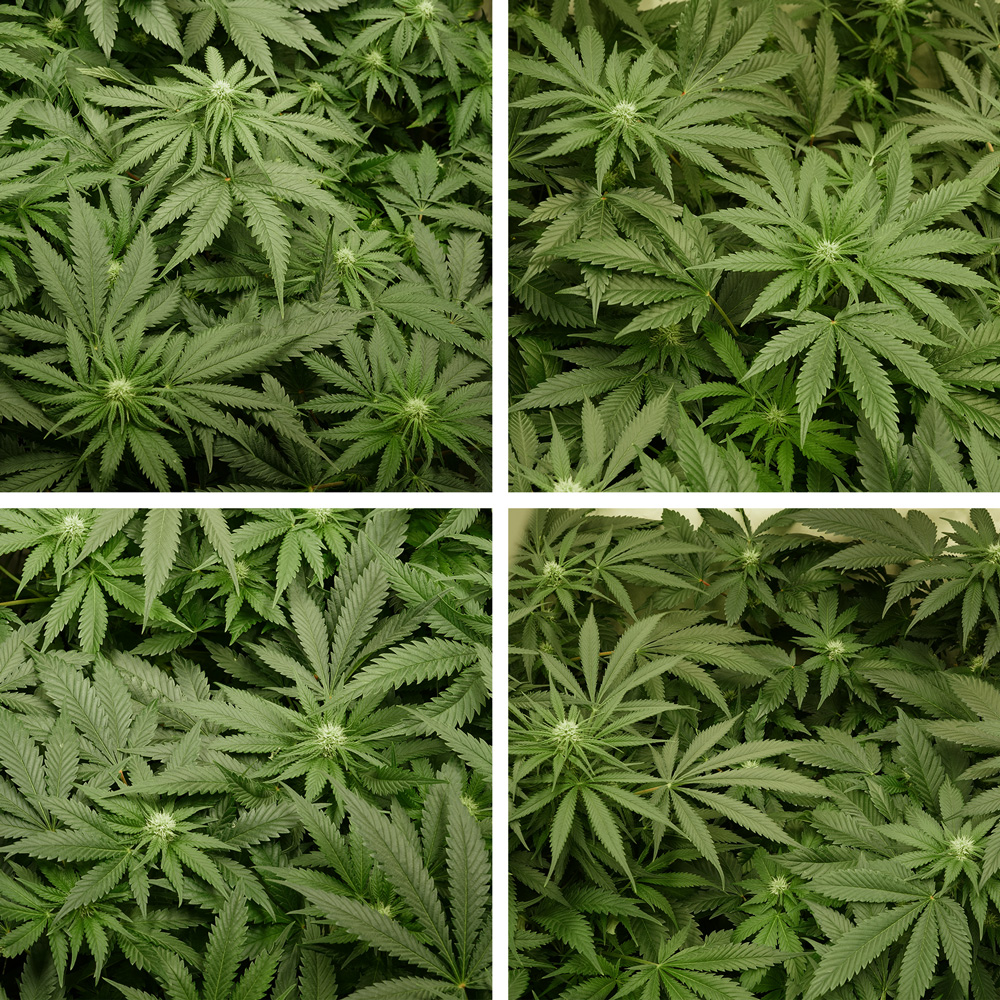
Basic tips on flowering cannabis plants
During bloom you may see your plant stretch as it grows vertically during the early flowering stage of cannabis. The requirement for water and nutrients may steadily increase.
During mid bloom your plants will continue to increase the size and quantity of buds. You will be able to increase light intensity and consider a PK (Phosphorus and Potassium) boost. Near the end of bloom you may want to flush your plants and maintain low relative humidity levels to minimise the risk of bud rot/mold (Botrytis).
Throughout bloom you will notice aroma levels gradually increasing. The well-prepared grower will have adequate odour control (good quality carbon filters) when cannabis plants are in the flowering stage.
The challenges of the cannabis flowering stage week by week can seem complicated. But with the right preparation and some expert advice you will soon find yourself looking forward to bloom and the challenges it brings. Growing cannabis in the flowering stage is not just rewarding, it is also satisfying and hugely enjoyable!

How much water do cannabis need during the flowering stage?
Water requirements increase as the plant grows. You can expect water requirements to increase as your plant progresses from seedling, then into the veg growth stage and finally into the cannabis flowering stage.
Related:
Cannabis growth stages breakdown
What kind of nutrients are best for flowering cannabis?
Cannabis nutrients in the flowering stage tend to be rich in Phosphorus and Potassium. You won’t need the same Nitrogen-rich nutrients that were used in veg growth.
There are many nutrient suppliers, all claiming to have high quality nutrients for flowering stage cannabis. Each grower tends to have their own idea on what is the best fertilizer for flowering cannabis. The choice of suppliers is wide and at times confusing. Especially for the less experienced grower.
Using slow release organic nutrients (BioTabs are particularly recommended) is a good way to simplify matters. If growing in soil, you can use slow release nutrients which will make growing easy. You won’t have to worry about adding extra nutrients apart from perhaps a general purpose bloom nutrient or PK booster in the final few weeks.
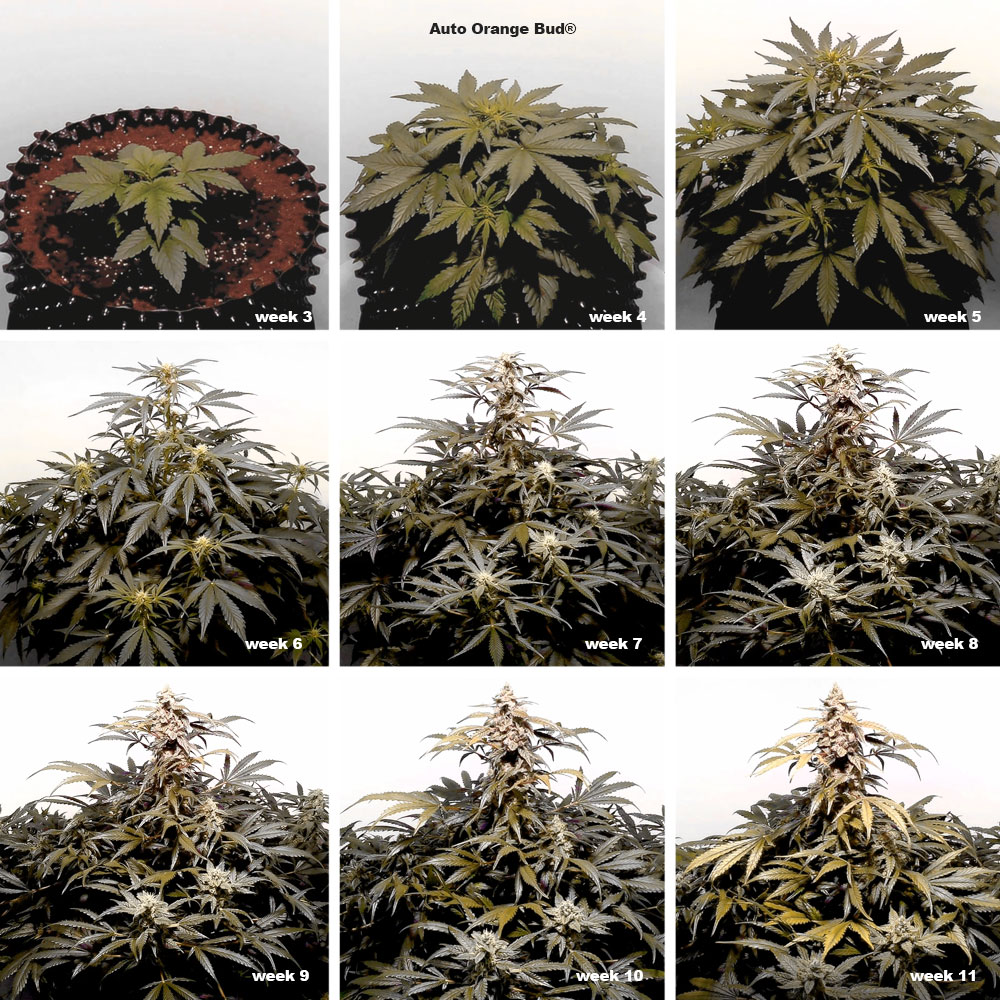
Nutrients and over-feeding risks in the cannabis flowering stage
One common question is how often to feed cannabis during flowering using traditional bottled nutrients. Here it’s important to be able to understand the plant nutritional needs as she grows. Give too much nutrition and you risk ‘burning’ the plant – you will see brown tips to the leaf fingers.
This can permanently reduce (stunt) future growth potential. In general, it is better to slightly underfeed the plants and steadily/slowly increase plant nutrients as the plant grows rather than overfeed and damage them. This becomes easier once you have completed your first few successful grows.
Two of the most common and damaging problems seen, especially by less experienced growers, is the tendency to over water and over feed your plants. Remember, if nutrient management seems excessively confusing/complicated, one easy solution is slow release organic nutrients, like BioTabs.
The outdoor cannabis flowering stage starts when the plant senses the shortened daylight hours and starts to bloom before the late season weather arrives. When your outdoor plant is rooted into good quality, nutritious moist earth there may be no need at all to add additional nutrients.

What is the ideal temperature / humidity for the flowering stage?
To minimise the risk of bud rot/mold many growers aim to keep humidity below 45-50%. Use of a de-humidifier in your grow room is one way to achieve this. Preferably one with a large water collection reservoir so that you are not continually having to empty the water.
How to speed up cannabis flowering?
If it’s too cold, bloom will be slowed and eventual yields reduced. Temperatures should be around the 22-25ºC range (approx 70-77ºF). The best way to speed up cannabis flowering is to make sure that environmental conditions are correct. This means ensuring the right temperature range, the correct humidity during bloom and offering feed/water at the right times without overfeeding/overwatering.
Use of a tensiometer, which measures soil moisture levels may be useful for some growers and can help prevent conditions being too wet or excessively dry. Some growers will reduce daily light hours from 12 (i.e. 12/12 light) to 11/13 or even 10/14. This can help even slow-flowering sativa strains to increase their ripening speed.
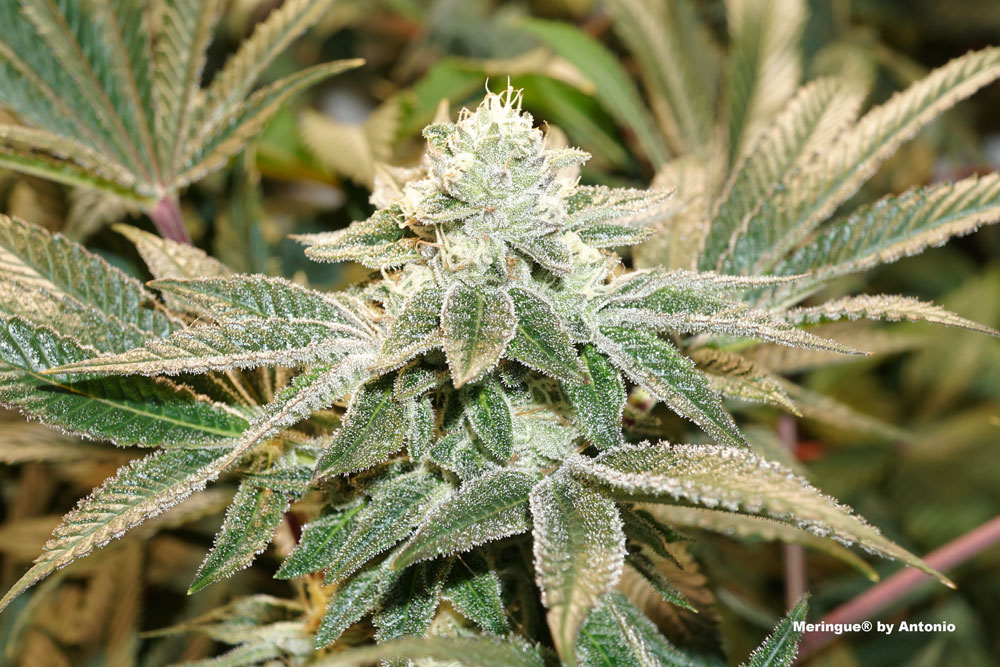
How much light should cannabis plants receive in bloom?
Light levels are often measured in PPFD (photosynthetic photon flux density) by the grow light manufacturers. The best light manufacturers will explain the best hanging heights and the PPFD light levels that will be achieved for a given area. Often growers will aim for PPFD levels of 600-900 during the cannabis flowering stage. Higher PPFD levels of over 1000 can be used, often in conjunction with CO2 supplementation.
How many hours of light for flowering cannabis?
12 hours of light followed by 12 hours of darkness is quite common. Most serious professional growers, and an increasing number of home growers, find that LED lights deliver the highest quality results.
LED also has the highest efficiency of energy usage and the longest lifetime of any grow light technology. Note that when growing autoflower seeds, they will enter the cannabis flowering stage ‘automatically’ at around 4-5 weeks old, irrespective of the number of light hours used.
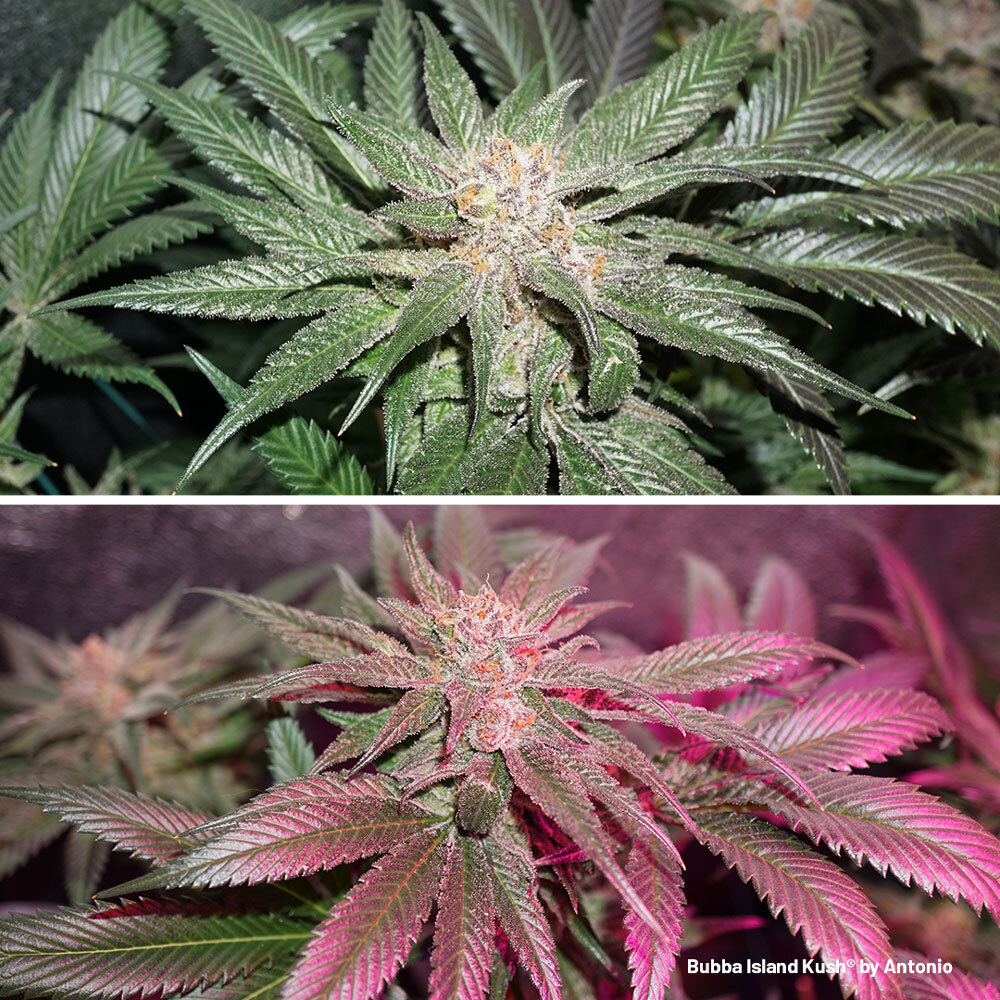
When to prune, top and trim cannabis in bloom?
How to prune cannabis during flowering? It will depend on your preferred grow style. Some growers allow their plants to grow naturally without leaf removal or training. Others, for example those growing with the SCROG method, may routinely remove lower fan leaves and bud sites which would have received minimal light. This allows the plant to focus energy and growth in the most productive areas.
Note that topping isn’t recommended during the cannabis flowering phase. It is better to do this in veg growth while there is plenty of time for the plant to recover. However, some sativa growers will top some longer-blooming plants during the first two weeks of bloom just to control the main bloom. But this can also be done during veg growth.
When to start flowering cannabis?
When to start flowering cannabis /when to induce flowering cannabis? If you’re growing with the SOG method (sea of green) then you may want to introduce the cannabis flowering stage immediately, or within a week or two of cannabis seed germination.
Conversely, if growing with the SCROG method you may wish to wait a couple of months or longer before starting the cannabis flowering stage. When growing cannabis plants the natural way, without training, many will use a veg growth period of 3-6 weeks. Much depends on your personal goals, style of growth, size of grow room and available vertical height. If you’re growing autoflowering cannabis seeds, it’s the genetics rather than you which define the start of the cannabis flowering stage.
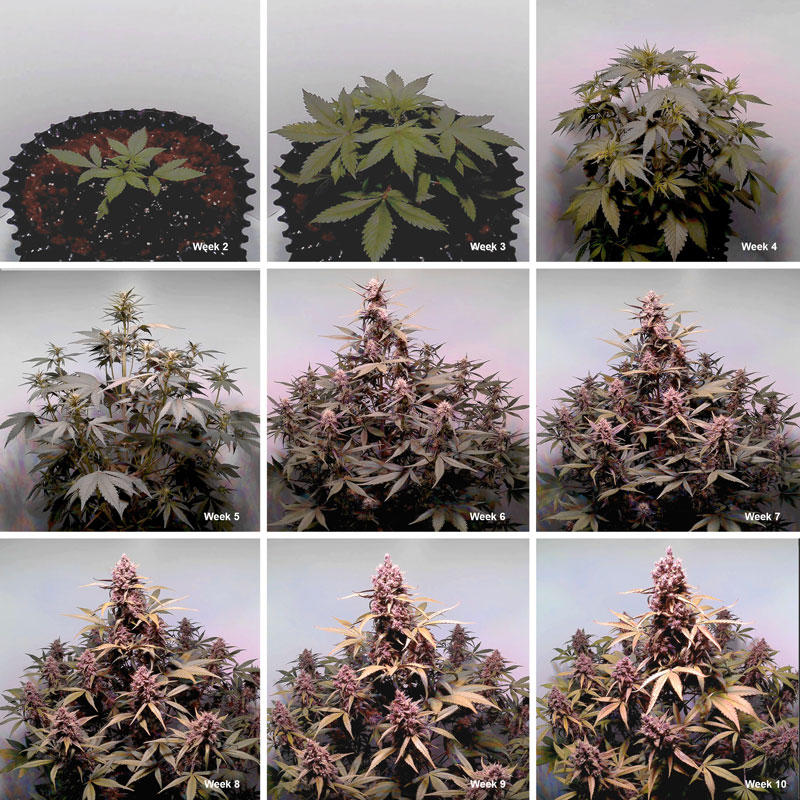
How much does cannabis grow during flowering?
Sativa strains can stretch to 3 times their pre-bloom height. Indica strains tend to be less stretchy but can still double their height during the cannabis flowering stage.
Related:
Growing cannabis with the SOG method (sea of green method)
Related:
SOG vs SCROG, which is best for your grow?

The start of the cannabis flowering stage
How big should a cannabis plant be before flowering? /How tall should cannabis be before flowering?
For some growers, the size of their grow room defines when the cannabis flowering stage should begin. If you have limited vertical grow space you may prefer to grow indica (or indica dominant) cannabis seeds with little stretch and perhaps a short vegetative growth period.

How to tell when cannabis is flowering?
After indoor growers have reduced daily light hours to 12, photoperiod cannabis plant will stretch in the early transition stages. Plant stretch is an early indicator that bloom will follow.
The (future) bud points often have a light green appearance. You may see the first signs of growth emerging from the bud sites, the white hairs are known as pistils.
A quick online look at cannabis flowering stage pictures (or a cannabis flowering stage time lapse) will show you that the small initial bloom points can eventually become long and chunky. In optimised conditions, some will be almost as long and thick as your arm.
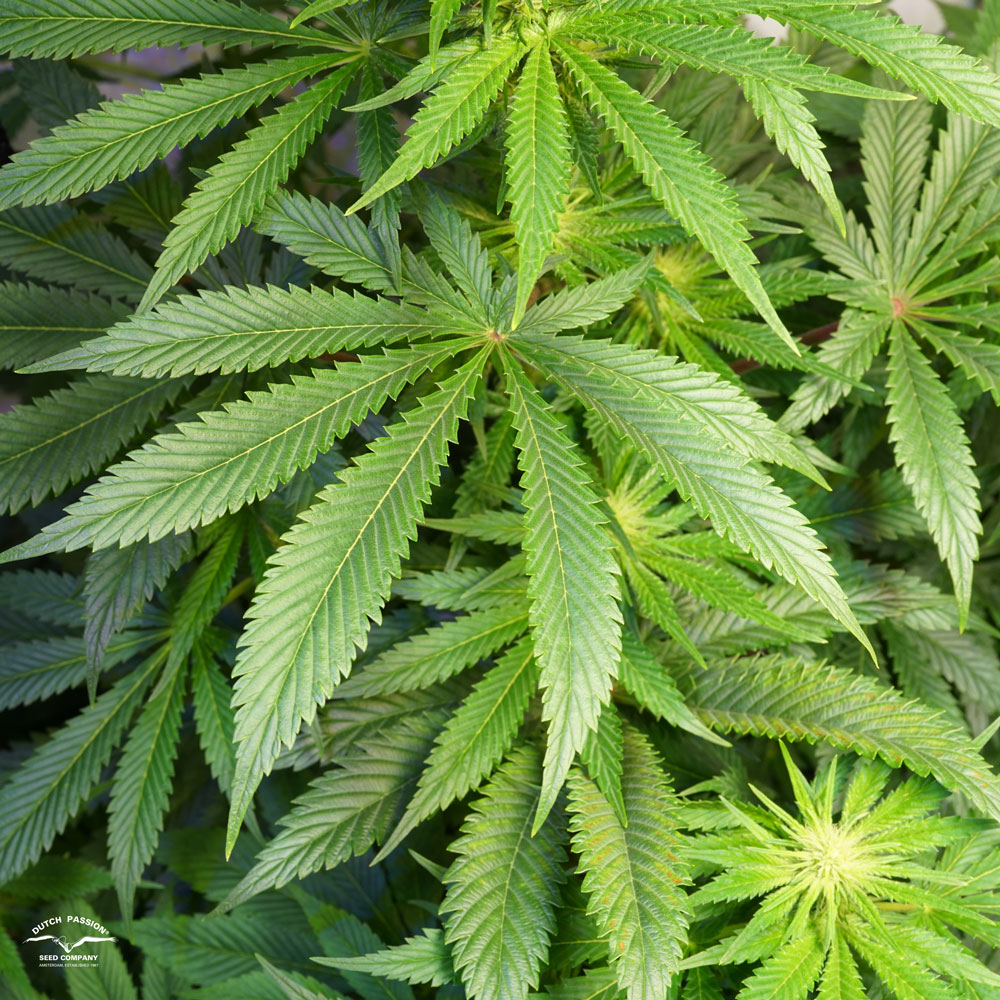
How long does the cannabis flowering stage last?
How long is the flowering stage of cannabis?
For a fast indica strain such as Bubba Island Kush seeds, the cannabis flowering stage may last just 7 weeks. Conversely, a slow blooming Haze strain may have phenotypes which can take 14 weeks or more in the cannabis flowering stage. Some cannabis genetics, such as Auto Blueberry, can grow from autoflower seed to harvest in as little as 8-9 weeks.
What week of flowering do you flush cannabis plants?
Those that flush their plants often provide only pure water for the last week or two before harvest.
Related:
Top 5 fastest cannabis strains to grow
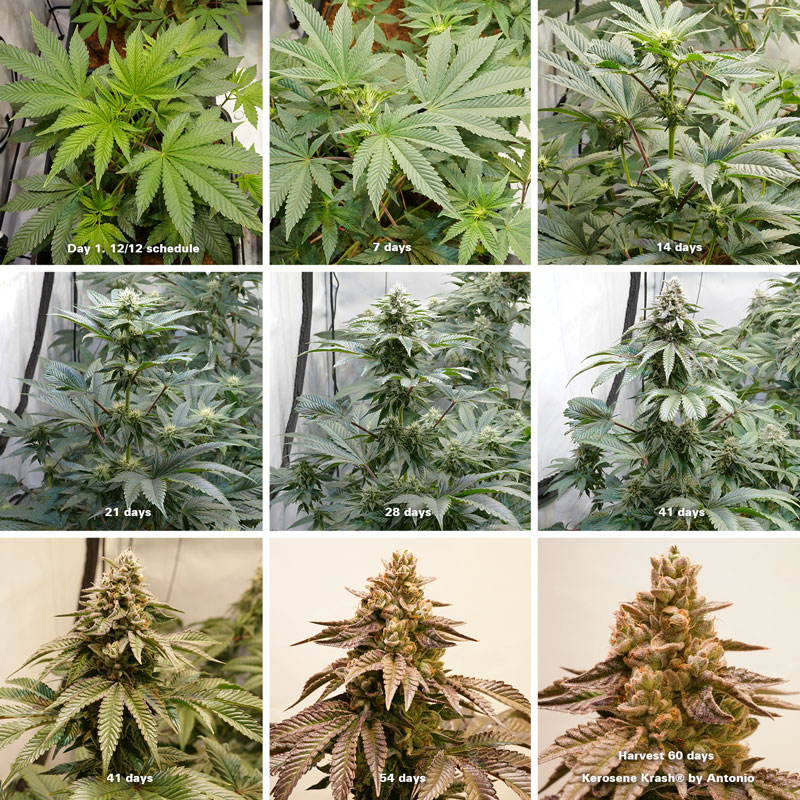
How to tell if your plant is ready for harvest?
Often growers will consider several variables. Checking trichome appearance under a magnifying glass is one of the more common methods. Growers often harvest when the majority of the trichomes are cloudy. But personal taste may dictate an early, mid or late harvest. Each has their own effects, pros and cons.
Related:
How to harvest dry and cure cannabis
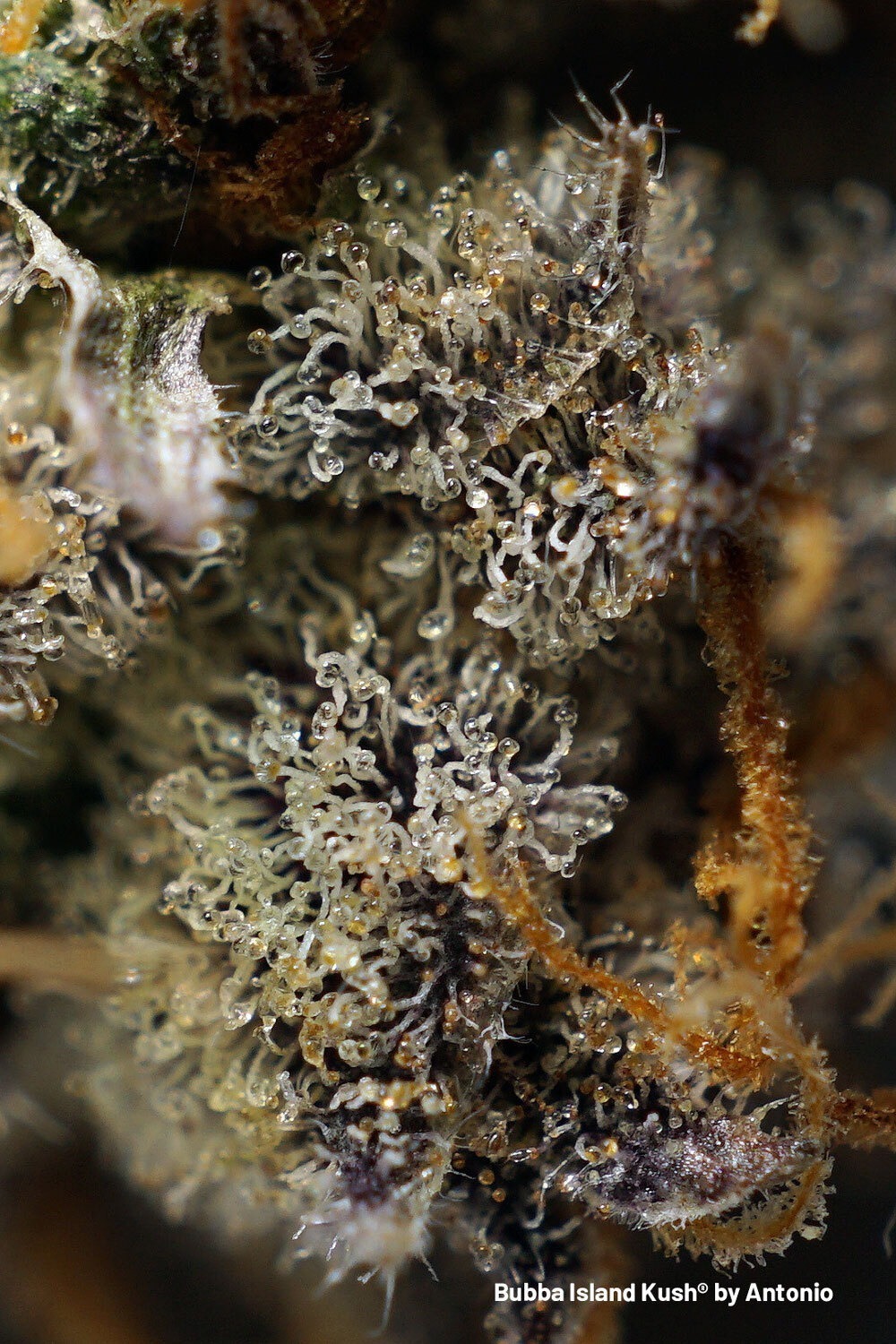
Re-veg a flowering cannabis plant
How to reveg a flowering cannabis plant? If you have a plant which is simply too good to lose you should re-veg her. In simple terms that means re-growing the plant after harvest. It’s easy to do and you can repeat the process several times. Just leave some green leafy material and lower buds on your harvested plants. This allows them to gather light energy when you put them back in the grow room with 18-24 hours of daily light. Wait a few days and you will see new vegetative growth. After a few weeks/months you can change the lights to 12/12 and watch her bloom again.
How to clone a flowering cannabis plant
Most people take cuttings from plants in vegetative growth. But you can also take a cutting from a plant which is already in the cannabis flowering stage. These can be reverted back to vegetative growth for a few weeks before flipping into bloom.

Common mistakes to avoid during the cannabis flowering stage
You have successfully germinated your cannabis seeds and grown them through the veg growth stage. Now you need to successfully and safely get your plants through the cannabis flowering stage without any mistakes. Here are some of the most common problems to avoid.
Poorly checked and regulated environmental conditions
Maintaining a good, stable climate will prevent many subsequent issues. Temperatures between 20-27ºC day and night will give good results. Avoid temperatures over 30ºC and below 18ºC, these extremes can cause stress to your plants. Avoid large swings in humidity, keep RH low during the cannabis flowering phase and monitor with a hygrometer to record daily minimum and maximum readings to avoid any major humidity swings after watering and overnight.
Vapour pressure deficit (‘VPD’) is a technique used to calculate the precise combinations of temperature and humidity which allow optimised growth/bloom. VPD and the theory behind it can seem complicated to grasp, especially by less experienced growers. But the more advanced grower who doesn’t mind an initial technical challenge may find that they can improve their grow skills and results when they have mastered VPD.
Poor pH and nutrient levels monitoring
All pH and EC meters should be regularly checked and recalibrated against known reference solutions. When the meters can’t be successfully calibrated it’s time to buy new ones. If you get pH and EC wrong it can have damaging effects. Get them really wrong and it could have fatal consequences for your plants especially in hydroponic grow systems.
Related:
Understanding how pH affects cannabis plants
Incorrect lighting setup (too far from/too close to the plant)
Serious growers pay very close attention to their light levels during the cannabis flowering stage. Take time to understand the PPFD light levels you are getting at various hanging heights over your grow area. The best light manufacturers will clearly show the lights intensities produced by their lights at different hanging heights.
Understanding correct light set-up will ensure that you can gradually increase your plants exposure to steadily higher light intensities as they mature. PPFD light levels of around 600-900 are often used in the cannabis flowering stage. Raising your light further above your plant decreases the intensity of the light energy they receive. Putting your light closer to the plant canopy increases intensity.
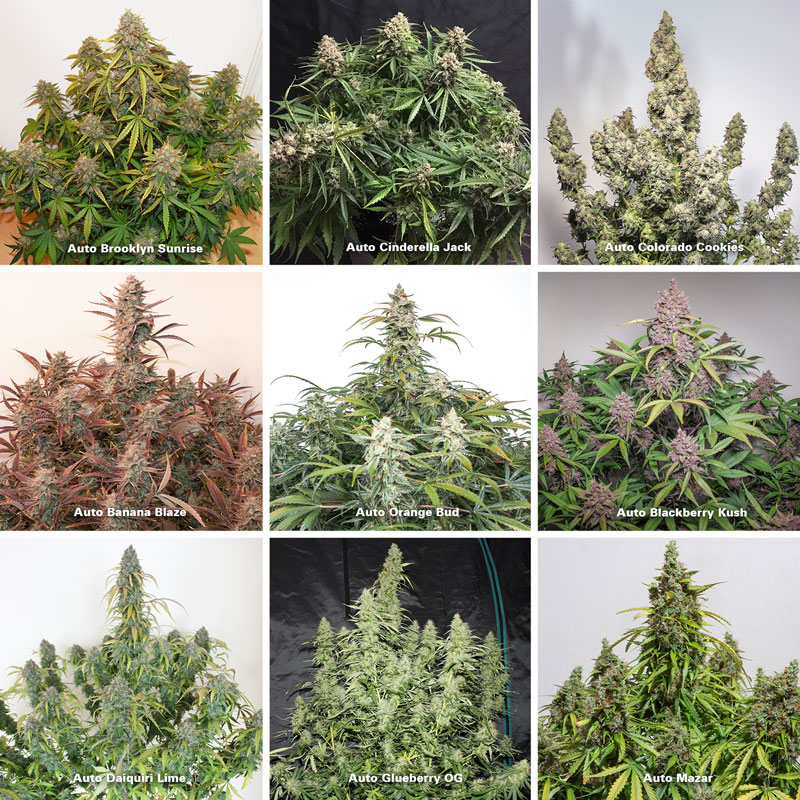
Not paying attention to the smell
One thing you can be sure of when growing good quality cannabis seeds is that you will have a pungent grow tent during the cannabis flowering stage. Not paying attention to the smell, and not dealing with it effectively is a recipe for problems. The attentive cannabis grower uses a good quality carbon filter to remove smells and may even keep a spare one ready for the time when the filter fails.
Don’t let bud-mold ruin your entire grow!
One of the worst things that can happen to a grower is an outbreak of bud rot/mold just before harvest. Keep control of humidity (keep it below 45-50%) during the cannabis flowering stage and inspect your plants regularly.
Male plants pollinating female plants
If you’re growing from feminised cannabis seeds or autoflower seeds you may never see a male cannabis plant. If seen, male plants are usually quickly removed from the grow room and discarded to prevent them filling your precious buds with seeds.
Another cause of pollinated female plants is if one of your plants turns hermie during the flowering stage of cannabis. Isolated hermie flowers can be removed individually. If the plant is a complete hermie, it’s safer to remove it.
When all common mistakes are avoided (light burn, nutrient burn, pH issues, stable environmental conditions, etc.) plant stress is minimised and the chances of ever seeing a hermie are significantly reduced. It’s the responsibility of the grower to do all they can to optimise grow/bloom conditions.
Enjoy watching the cannabis flowering stage!
For many growers, the cannabis flowering stage is simply the most rewarding and exciting part of cannabis cultivation. Anticipation grows week by week as the plants mature.
The buds begin to stack nicely on each other as the blooms grow in length and girth. The aroma builds and if you’re lucky you may see a flourish of autumnal colours in the leaves and buds as harvest approaches.
But no matter how good a grower you are, you won’t grow prize winning buds from substandard cannabis seeds. Get the best cannabis seeds you can from a supplier you trust and remember the cost of the cannabis seed is small in relation to the value of your final harvest. Enjoy the cannabis flowering stage!


Basic Guides
Popular varieties
- Auto Blackberry Kush ®
- Auto Blueberry ®
- Auto Brooklyn Sunrise ®
- Auto Cinderella Jack ®
- Auto Colorado Cookies ®
- Auto Daiquiri Lime ®
- Auto Duck ®
- Auto Durban Poison
- Auto Euforia ®
- Auto Frisian Dew
- Auto Glueberry O.G. ®
- Auto Lemon Kix ®
- Auto Mazar ®
- Auto Night Queen ®
- Auto Orange Bud ®
- Auto Think Different
- Auto Ultimate ®
- Auto White Widow ®
- Auto Xtreme ®
- Blue Auto Mazar ®
- Blueberry ®
- Brainstorm
- Bubba Island Kush ®
- C-Vibez ®
- CBD Auto White Widow ®
- CBD Charlotte’s Angel ®
- CBD Compassion ®
- CBD Kush ®
- CBD Skunk Haze ®
- Critical Orange Punch ®
- Desfrán ®
- Durban Poison ®
- Euforia ®
- Freddy’s Best ®
- Frisian Dew ®
- Frisian Duck ®
- Glueberry O.G. ®
- HiFi 4G ®
- Hollands Hope ®
- Jorge’s Diamonds #1 ®
- Kerosene Krash ®
- Master Kush
- Mazar ®
- Meringue ®
- Mokum’s Tulip ®
- Night Queen ®
- Orange Bud ®
- Orange Hill Special ®
- Outlaw Amnesia ®
- Pamir Gold ®
- Passion #1®
- Passion Fruit ®
- Power Plant ®
- Purple #1 ®
- Skunk #11 ®
- StarRyder ®
- Strawberry Cough ®
- Sugar Bomb Punch ®
- The Ultimate ®
- Think Big ®
- Think Fast ®
- White Widow

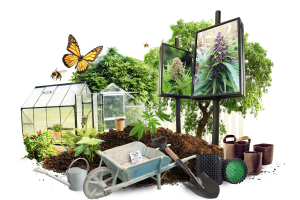

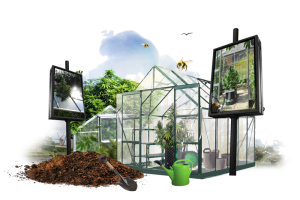













4 Comments. Leave new
great reading , helped me out alot
great read helps a lot them tips thank you.
Very very helpful !!! THANK YOU!
Man thanks for this. THIS WAS ONE OF THE BEST informative reads so far ive seen in 23+ years. Straight arrow right to the point. You didnt string me around the cannibus bush!!
Thank you to the ines before me who laid down the facts.